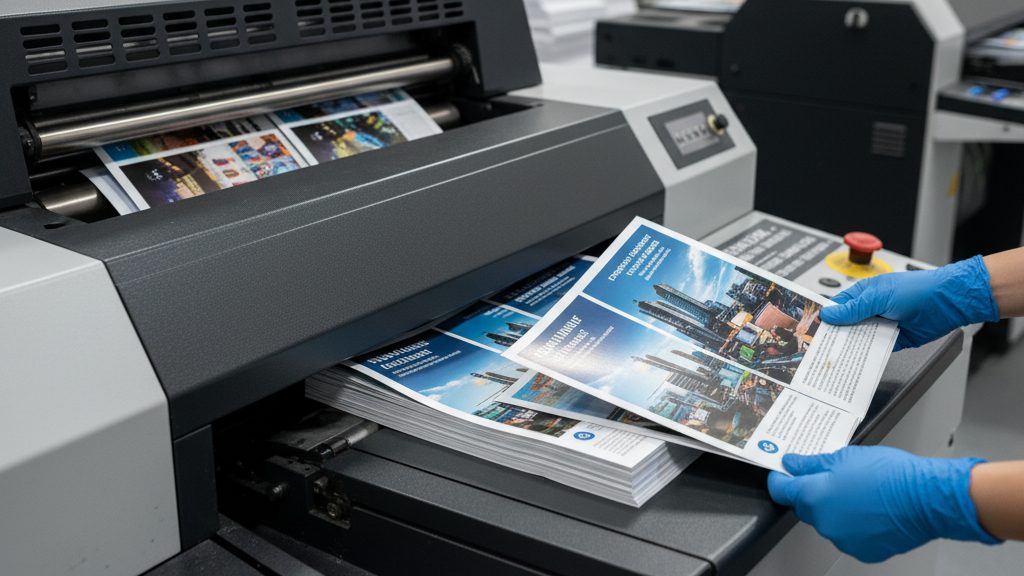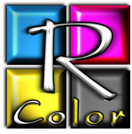Why Brochure Printing Still Wins Hearts
People may scroll social media all day, but when it comes to leaving a strong impression, Brochure Printing still has magic in it. Holding a brochure feels different than looking at a screen. It is real, it sits on a desk, and sometimes it gets shared around. That makes it a simple but lasting way to tell your brand’s story.
Some business owners skip brochures, thinking digital is enough. But a well-designed, nicely printed brochure does something online ads cannot—it lingers. It does not vanish when someone closes a tab. Clients flip through it, keep it in folders, and sometimes even pull it out months later.
Picking the Right Paper and Finish
Paper may sound boring, but honestly it is half the battle in Brochure Printing. A flimsy sheet makes your brand look cheap, while thick or textured paper feels solid and reliable.
Choices You Can Try
- Gloss finish – shiny, makes photos and colors pop.
- Matte finish – smoother look, feels calm and elegant.
- Heavy stock – solid in hand, says quality without words.
- Recycled paper – shows clients you actually care about the planet.
The finish you pick should match what you want clients to feel. For example, a luxury brand might lean on matte heavy stock, while a travel company may use glossy so the images burst out.
Layouts That Guide Readers
The fold of a brochure decides how people move through it. With Brochure Printing, a layout is not just decoration—it directs attention.
Common Folding Styles
- Tri-fold – classic, fits in an envelope, easy to read.
- Z-fold – zigzag look, adds energy, works for step-by-step stories.
- Gate fold – opens like doors, dramatic, great for big reveals.
- Booklet style – more like a mini magazine, perfect for product lists.
White space matters a lot here. Many people try to cram every detail in, but too much text makes readers stop. Let the design breathe so the key points stand out.
The Role of Colors and Fonts
Color is not just decoration; it changes mood. The same brochure can look playful, serious, or luxury just by color choices. Fonts also play a huge part.
Simple Guidelines
- Stick to your brand colors but do not overload.
- Use bold, clean headings so eyes catch them fast.
- Tiny text is a big no; nobody enjoys straining to read.
- Always use high-quality images. Blurry pictures ruin trust quickly.
Clients often judge your company by the “look” of the brochure before they even read the words.
More Than Looks: Adding Value
Brochure Printing is not only about design. A brochure should give clients something useful, not just promotional fluff.
Ways to Add Value
- Real client testimonials—let others do the talking for you.
- QR codes leading to videos, offers, or catalogs.
- Easy-to-read charts for complex services.
- Contact details placed clear and bold, not hidden at the bottom.
The idea is to make the brochure not just pretty, but practical. Something a client wants to keep instead of tossing.
Techniques That Make Brochures Stand Out
If you want people to remember, regular printing may not be enough. Advanced Brochure Printing techniques give that wow factor.
- Spot UV – glossy shine only on certain parts, like your logo.
- Embossing – raised design clients can feel under fingers.
- Foil stamping – metallic touches, adds luxury vibe.
- Die-cuts – cut into creative shapes, makes brochures more fun.
These extras cost more, yes, but they pay off when clients view you as more polished and trustworthy.
Getting Brochures into the Right Hands
You could design the best brochure in the world, but if it stays in a box, it does nothing. Distribution is key. Hand them out at trade shows, client meetings, leave a stack in your office lobby, or even mail them. And always carry a few copies—you never know when you might need one.
FAQs About Brochure Printing
Q1: What brochure size works best?
Standard 8.5 x 11 tri-fold is popular since it is handy, but if you want to stand out, larger square formats or mini booklets can also catch eyes.
Q2: How many brochures should I print?
Small companies may start with 500–1000 copies. Larger campaigns can go into the thousands. Printing in bulk usually cuts the cost per piece.
Q3: Does brochure printing really work in a digital era?
Yes, it does. Online ads disappear fast, but a brochure is physical. Clients can pick it up again later, and that repeat exposure is valuable.
Q4: How long does printing usually take?
Basic brochures can be ready in 2–3 days. Special finishes like foil or embossing can take a week or more. Plan around events or launches.
Q5: What mistakes should I avoid?
Cramming too much text, using blurry images, ignoring proofread. Even one typo can hurt your credibility with clients.
Conclusion
At the end of the day, Brochure Printing is still one of the strongest tools businesses can use. It is more than folded paper—it is your handshake, your elevator pitch, and your mini billboard all packed into one.
When businesses want an edge, local expertise helps too. That is where Las Vegas Printing Services often shine, offering faster delivery and market-specific knowledge.
And for companies ready to leave a mark at events, pitches, or even casual meet-ups, Brochure Printing in Las Vegas can turn a simple piece of paper into something that brings clients closer.


